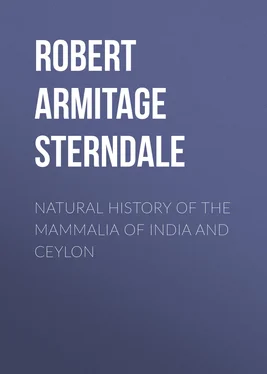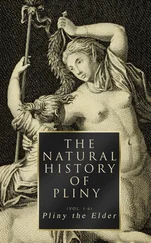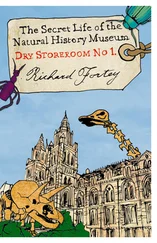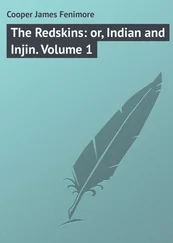Robert Armitage Sterndale - Natural History of the Mammalia of India and Ceylon
Здесь есть возможность читать онлайн «Robert Armitage Sterndale - Natural History of the Mammalia of India and Ceylon» — ознакомительный отрывок электронной книги совершенно бесплатно, а после прочтения отрывка купить полную версию. В некоторых случаях можно слушать аудио, скачать через торрент в формате fb2 и присутствует краткое содержание. Жанр: foreign_edu, Биология, на английском языке. Описание произведения, (предисловие) а так же отзывы посетителей доступны на портале библиотеки ЛибКат.
- Название:Natural History of the Mammalia of India and Ceylon
- Автор:
- Жанр:
- Год:неизвестен
- ISBN:нет данных
- Рейтинг книги:5 / 5. Голосов: 1
-
Избранное:Добавить в избранное
- Отзывы:
-
Ваша оценка:
- 100
- 1
- 2
- 3
- 4
- 5
Natural History of the Mammalia of India and Ceylon: краткое содержание, описание и аннотация
Предлагаем к чтению аннотацию, описание, краткое содержание или предисловие (зависит от того, что написал сам автор книги «Natural History of the Mammalia of India and Ceylon»). Если вы не нашли необходимую информацию о книге — напишите в комментариях, мы постараемся отыскать её.
Natural History of the Mammalia of India and Ceylon — читать онлайн ознакомительный отрывок
Ниже представлен текст книги, разбитый по страницам. Система сохранения места последней прочитанной страницы, позволяет с удобством читать онлайн бесплатно книгу «Natural History of the Mammalia of India and Ceylon», без необходимости каждый раз заново искать на чём Вы остановились. Поставьте закладку, и сможете в любой момент перейти на страницу, на которой закончили чтение.
Интервал:
Закладка:

I may here remark that the Insectivora are in most cases plantigrade, therefore the term is not an apposite one as applied to the bear and bear-like animals only, but in treating of them under the term Arctoidea we may divide them again into Plantigrades and Sub-plantigrades .
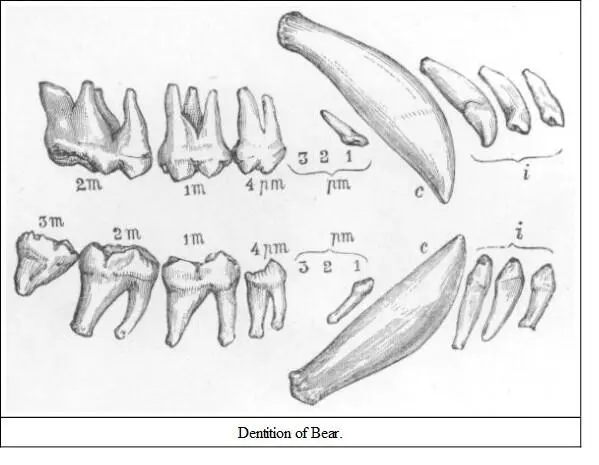
The bears differ from the dogs and cats widely in form and manner, and diet. The cat has a light springy action, treading on the tips of its toes, a well-knit body glistening in a silky coat, often richly variegated, "a clean cut," rounded face, with beautifully chiselled nostrils and thin lips, and lives exclusively on flesh. The bear shambles along with an awkward gait, placing the entire sole of his foot on the ground; he has rough dingy fur, a snout like a pig's, and is chiefly a vegetarian—and in respect to this last peculiarity his dentition is modified considerably: the incisors are large, tri-cuspidate; the canines somewhat smaller than in the restricted carnivora; these are followed by three small teeth, which usually fall out at an early period, then comes a permanent premolar of considerable size, succeeded by two molars in the upper, and three in the under jaw. The dental formula is therefore: Inc., 3—3/3—3; can., 1—1/1—1; premolars, 4—4/4—4; molars, 2—2/3—3. In actual numbers this formula agrees with that for the dogs; but the form of the teeth is very different, inasmuch as the large premolars and the molars have flat tuberculated crowns, constituting them true grinders, instead of the trenchant shape of the cats, which is also, to a modified extent, possessed by the dogs, of which the last two molars have, instead of cutting edges, a grinding surface with four cusps. The trenchant character is entirely lost in the bear, even in the carnivorous species which exhibit no material difference in the teeth, any more than, as I mentioned at the commencement of this work, do the teeth of the human race, be they as carnivorous as the Esquimaux, or vegetarian as the Hindu.
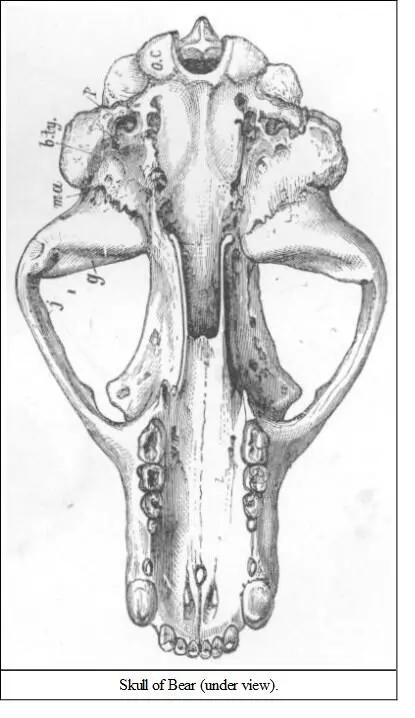
There is also another peculiarity in the bear's skull as compared with the cat's. In the latter there is a considerable bulging below the aperture of the ear called the bulla tympani , or bulb of the drum. This is almost wanting in the bear, and it would be interesting to know whether this much affects its hearing. I myself am of opinion that bears are not acute in this sense, but then my experience has been with the common Indian Ursus , or Melursus labiatus only, and the skulls of this species in my possession strongly exhibit this peculiarity. 6The cylindrical bones resemble those of man nearer than any other animal, the femur especially; and a skinned bear has a most absurd resemblance to a robust human being. The sole of the hind foot leaves a mark not unlike that of a human print.
The Brown Bear of Europe ( Ursus arctos ) is the type of the family, and has been known from the earliest ages—I may say safely prehistoric ages, for its bones have been frequently found in post-pliocene formations along with those of other animals of which some are extinct. An extinct species of bear, Ursus spelæus , commonly called the Cave Bear, seems to have been the ancestor of the Brown Bear which still is found in various parts of Europe, and is said to have been found within historic times in Great Britain.
The bear of which we have the oldest record is almost the same as our Indian Brown or Snow Bear. Our bear ( U. Isabellinus ) is but a variety of U. Syriacus , which was the one slain by David, and is spoken of in various parts of the Bible. It is the nearest approach we have to the European U. arctos .
NATIVE NAME.— Barf-ka-rich or Bhalu , Hind.; Harput , Kashmiri; Drin-mor , Ladakhi.

DESCRIPTION.—A yellowish-brown colour, varying somewhat according to sex and time of year. Jerdon says: "In winter and spring the fur is long and shaggy, in some inclining to silvery grey, in others to reddish brown; the hair is thinner and darker in summer as the season advances, and in autumn the under fur has mostly disappeared, and a white collar on the chest is then very apparent. The cubs show this collar distinctly. The females are said to be lighter in colour than the males."
Gray does not agree in the theory that Ursus Syriacus is the same as this species; in external appearance he says it is the same, but there are differences in the skull; the nose is broader, and the depression in the forehead less. The zygomatic arch is wider and stronger; the lower jaw stronger and higher, and the upper tubercular grinders shorter and thicker than in Ursus Isabellinus .
"It is found," Jerdon says, "only on the Himalayas and at great elevations in summer close to the snow. In autumn they descend lower, coming into the forests to feed on various fruits, seeds, acorns, hips of rose-bushes, &c., and often coming close to villages to plunder apples, walnuts, apricots, buckwheat, &c. Their usual food in spring and summer is grass and roots. They also feed on various insects, and are seen turning over stones to look for scorpions (it is said) and insects that harbour in such places. In winter they retreat to caves, remaining in a state of semi-torpidity, issuing forth in March and April. Occasionally they are said to kill sheep or goats, often wantonly, apparently, as they do not feed upon them. They litter in April and May, the female having generally two cubs. This bear does not climb trees well."
The next three species belong to the group of Sun Bears; Helarctos of some authors.
NATIVE NAME.— Bhalu , Hind.; Thom , Bhot.; Sona , Lepcha.
HABITAT.—The Himalayas, Nepal, Assam, Eastern Siberia, and China.
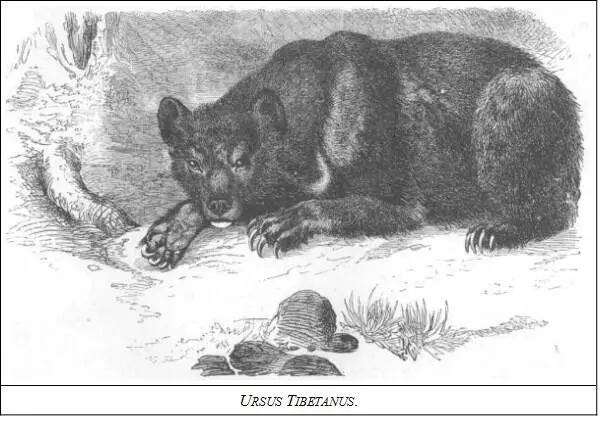
DESCRIPTION.—Entirely black, with the exception of a broad white V-shaped mark on the chest and a white chin. Neck thick, head flattened; ears large; claws very long and curved; fur short; body and head more slender than the preceding species.
Jerdon remarks that the specific name of this bear is unfortunate, since it is rare in Thibet. However the more appropriate specific name torquatus is now more generally adopted. It seems to be common in all the Himalayan ranges, where it is to be found from 5000 to 12,000 feet. Jerdon says it lives chiefly on fruit and roots, apricots, walnuts, apples, currants, &c., and also on various grains, barley, Indian corn, buckwheat, &c., and in winter on acorns, climbing the oak trees and breaking down the branches. They are not afraid of venturing near villages, and destroy not only garden stuff, but—being, like all bears, fond of honey—pull down the hives attached to the cottages of the hill people. "Now and then they will kill sheep, goats, &c., and are said occasionally to eat flesh. This bear has bad eyesight, but great power of smell, and if approached from windward is sure to take alarm. A wounded bear will sometimes show fight, but in general it tries to escape. It is said sometimes to coil itself into the form of a ball, and thus roll down steep hills if frightened or wounded." If cornered it attacks savagely, as all bears will, and the face generally suffers, according to Jerdon; but I have noticed this with the common Indian Sloth Bear, several of the men wounded in my district had their scalps torn. He says: "It has been noticed that if caught in a noose or snare, if they cannot break it by force they never have the intelligence to bite the rope in two, but remain till they die or are killed." In captivity this bear, if taken young, is very quiet, but is not so docile as the Malayan species. 7
Читать дальшеИнтервал:
Закладка:
Похожие книги на «Natural History of the Mammalia of India and Ceylon»
Представляем Вашему вниманию похожие книги на «Natural History of the Mammalia of India and Ceylon» списком для выбора. Мы отобрали схожую по названию и смыслу литературу в надежде предоставить читателям больше вариантов отыскать новые, интересные, ещё непрочитанные произведения.
Обсуждение, отзывы о книге «Natural History of the Mammalia of India and Ceylon» и просто собственные мнения читателей. Оставьте ваши комментарии, напишите, что Вы думаете о произведении, его смысле или главных героях. Укажите что конкретно понравилось, а что нет, и почему Вы так считаете.
